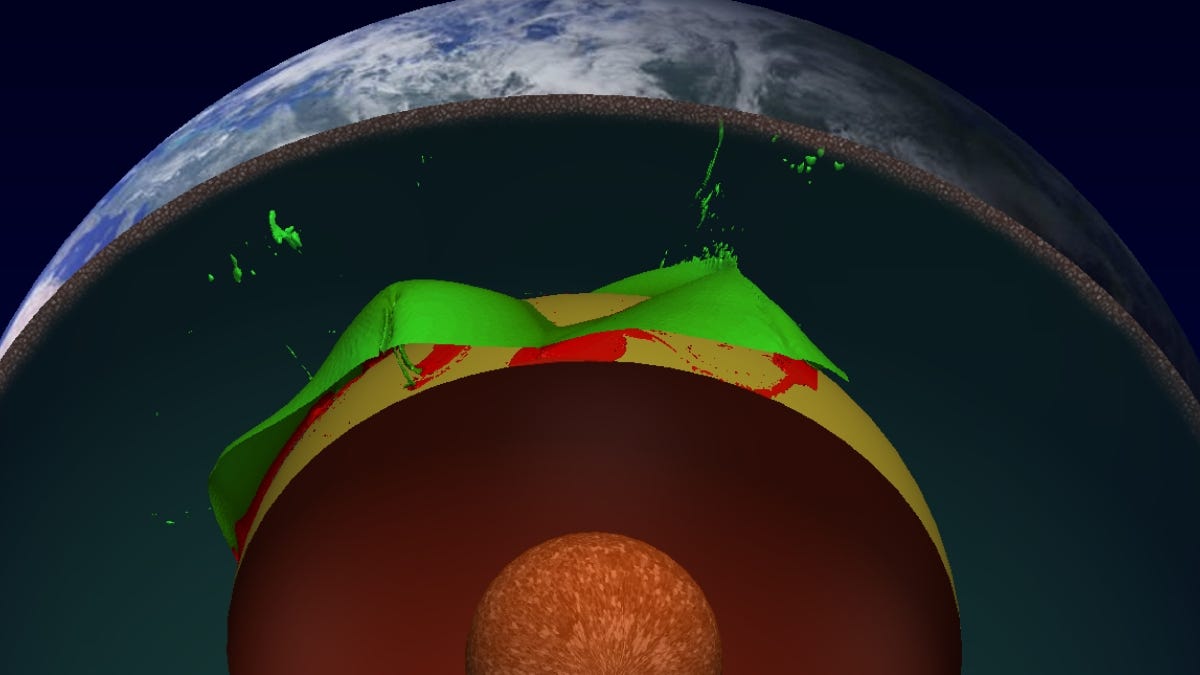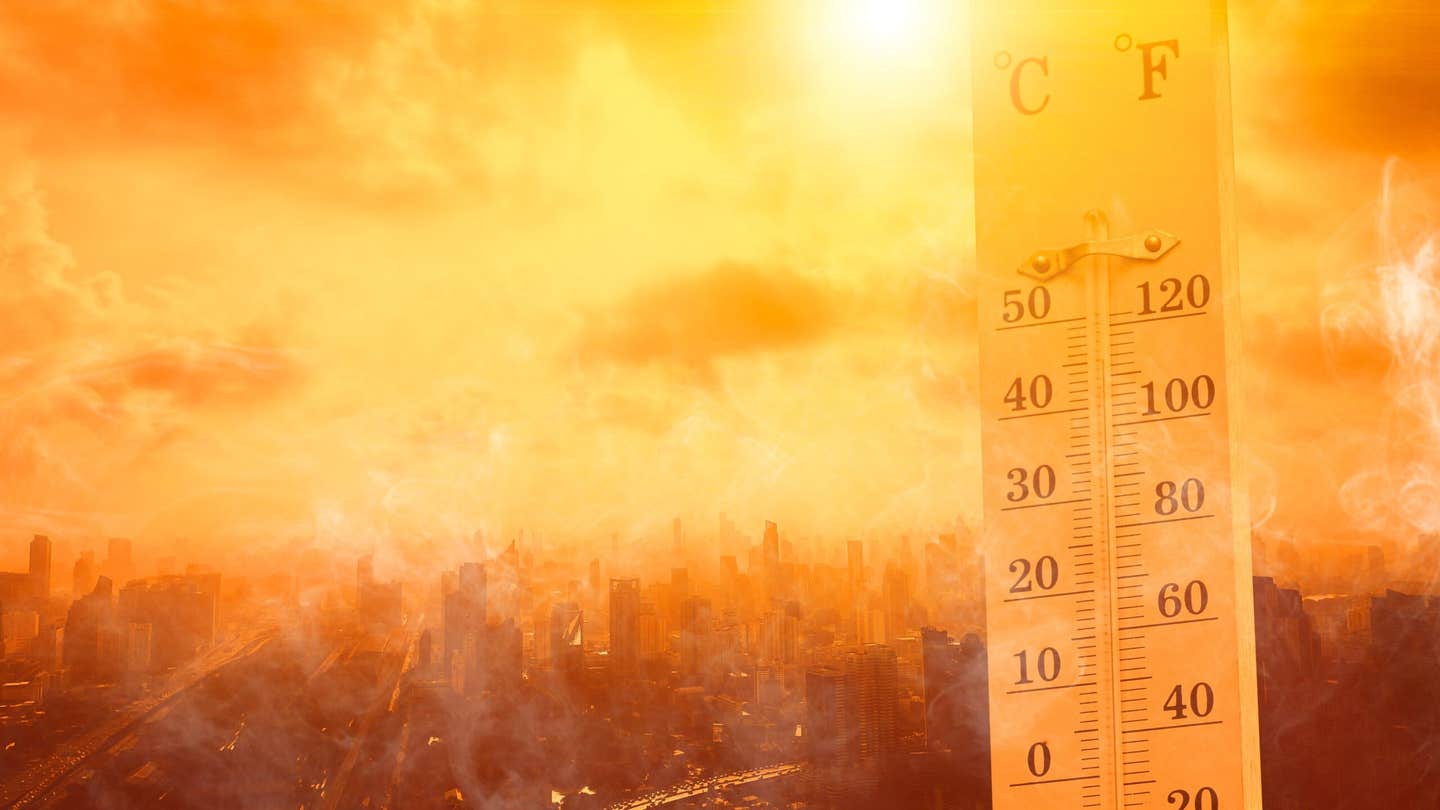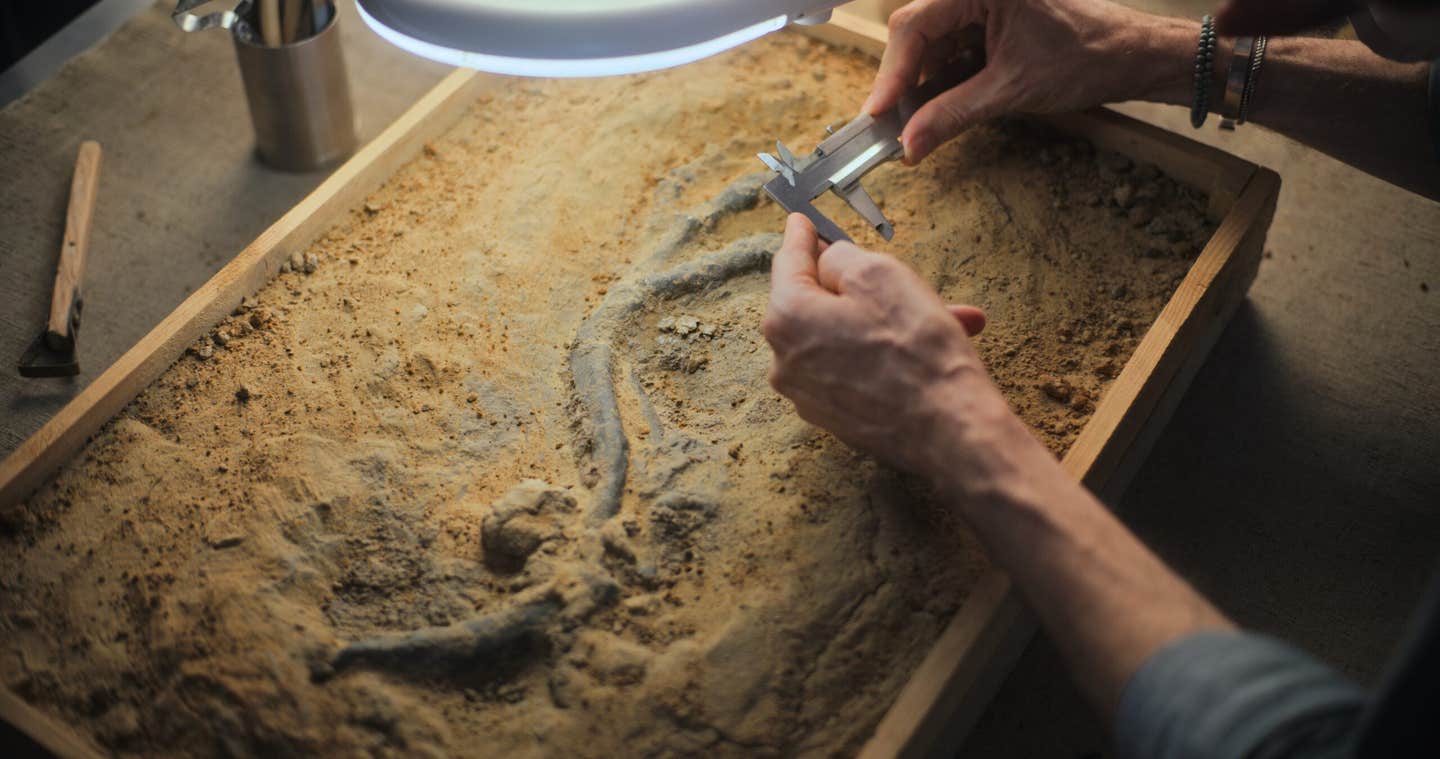Two hidden continents above Earth’s core may be relics of a primordial magma ocean
Far beneath your feet, two giant “blobs” of dense rock hover above Earth’s core formed when the young core leaked light elements into a deep magma.

 Edited By: Joshua Shavit
Edited By: Joshua Shavit

Far beneath your feet, two giant “blobs” of dense rock hover above Earth’s core. (CREDIT: Edward Garnero/Mingming Li/Arizona State University)
Deep beneath your feet, far beyond where any drill can reach, something strange is hiding. Two continent-sized blobs of rock sit just above Earth’s core, hot, dense and stubbornly different from everything around them. For decades, they have refused to fit simple stories about how the planet formed.
A new study in Nature Geoscience, led by Rutgers University geodynamicist Yoshinori Miyazaki with colleagues including Jie Deng of Princeton University, offers a fresh solution. It suggests those deep structures carry a chemical “memory” of a time when Earth was a molten world and the core itself was leaking into the mantle.
Hidden continents at the bottom of the mantle
If you could look 1,800 miles down, to the boundary between the rocky mantle and the metallic core, you would see two enormous regions called large low-shear-velocity provinces, or LLSVPs. One lies under Africa, the other beneath the Pacific Ocean. Each stretches thousands of kilometers across and rises hundreds of kilometers above the core-mantle boundary.
Earthquakes reveal them. As seismic waves pass through these blobs, they slow down compared with waves moving through the surrounding mantle. In some spots around their edges, waves crawl so slowly that geophysicists classify those patches as ultra-low-velocity zones, or ULVZs. Those are thin, pancake-like layers, sometimes only a few tens of kilometers thick, where wave speeds can drop by a factor of 10.
These observations tell you the material there is hotter and compositionally different. Ocean island basalts, the lavas that build volcanic chains such as Hawaii and Iceland, also point toward a strange reservoir at depth. Their chemical and isotopic “fingerprints” differ from the basalts erupting along mid-ocean ridges. Some contain lighter silicon isotopes and unusual ratios of trace elements, hinting at an ancient, enriched source that may connect to those deep piles.
"These are not random oddities," said Miyazaki, an assistant professor in the Department of Earth and Planetary Sciences in the Rutgers School of Arts and Sciences. "They are fingerprints of Earth's earliest history. If we can understand why they exist, we can understand how our planet formed and why it became habitable."
A young Earth covered in magma
Shortly after Earth formed about 4.5 billion years ago, the surface was not solid ground. It was a global ocean of magma, a churning layer of molten rock hundreds of kilometers deep. As this fiery ocean cooled, heavier ingredients should have sunk, lighter ones should have risen, and the mantle should have frozen into neat chemical layers.
That simple picture runs into trouble. Seismic studies do not show strong, clean layering through the whole mantle. Instead, they show those two massive piles, with ragged edges and scattered ULVZ patches clinging to the core. Earlier models of a basal magma ocean predicted a very thick, iron-rich bottom layer containing a lot of a mineral called ferropericlase. In those models, that layer stays as a continuous shell around the core.
Reality looks different. Seismic data indicate much less ferropericlase in the deep mantle and more complicated structures. "That contradiction was the starting point," Miyazaki said. "If we start from the magma ocean and do the calculations, we don't get what we see in Earth's mantle today. Something was missing."
When the core starts to leak
The missing piece, the team argues, is the core itself. As the metallic core slowly cooled, lighter ingredients such as magnesium, silicon and oxygen would have become saturated in the liquid iron. Under intense pressure, compounds like magnesium oxide (MgO) and silicon dioxide (SiO₂) crystallize out first. Tiny solid grains of these oxides would then float upward toward the base of the mantle.
If the overlying mantle had already solidified, those grains would collect as a thin, unstable layer at the boundary and rise in blobs. But if a molten magma ocean still lay on top of the core, the grains would drift into that liquid rock and dissolve. Over time, a cooling core would keep feeding MgO and SiO₂ into the magma ocean like a slow chemical drip.
The researchers modeled that situation and gave it a name: a basal exsolution contaminated magma ocean, or BECMO. In this scenario, the magma ocean is not just crystallizing from above. It is also being chemically “spiked” from below as the core leaks light elements into it.
That extra silica changes everything. As the molten layer cools, silicate minerals such as bridgmanite crystallize and settle, while iron-rich melt sinks. In a model without core leakage, silica eventually runs low and ferropericlase, an iron-bearing mineral, builds up into a very dense basal layer. With continuous SiO₂ coming from the core, silica never drops as quickly. Ferropericlase appears only in a very thin zone right at the bottom, while most of the lowermost mantle solidifies into bridgmanite and high-pressure SiO₂ phases such as seifertite.
The team’s calculations show that this process can move a mass of exsolved MgO and SiO₂ on the order of 10²³ kilograms into the lowermost mantle, a few percent of the mantle’s total mass. That much material can even raise pressure at the core-mantle boundary by more than 10 gigapascals and push the boundary inward by around 200 kilometers.
Turning deep layers into giant piles
To see what that kind of contaminated magma ocean would leave behind, Miyazaki and colleagues built high-resolution computer models of mantle convection over billions of years. They compared three cases: a mantle with no early chemical separation, one formed from a simple basal magma ocean, and one formed from their BECMO scenario.
In the simple magma ocean case, a thick ferropericlase-rich blanket stays draped almost all the way around the core. That shell remains dense and continuous, a picture that does not match the more patchy LLVPs and ULVZs imaged today.
The BECMO mantle behaves differently. The dense layer at the bottom starts only about 100 kilometers thick and is rich in bridgmanite and silica, not just iron oxide. Mantle circulation gradually sweeps these dense chunks into piles. Over time, those piles grow into structures that look very much like the observed LLSVPs. The models also produce ULVZ-like patches at the edges and within the piles, rising 20 to 50 kilometers high and spreading laterally up to about 900 kilometers.
In other words, a leaking core feeding a contaminated magma ocean can create localized, long-lived deep piles instead of a global dense shell. Those piles stay denser than the surrounding mantle, but not so dense that they never move. Plumes of hot rock can still tap them, potentially carrying their chemical signatures up to the surface in hotspot volcanoes.
"This work is a great example of how combining planetary science, geodynamics and mineral physics can help us solve some of Earth's oldest mysteries," said Deng. "The idea that the deep mantle could still carry the chemical memory of early core–mantle interactions opens up new ways to understand Earth's unique evolution."
Chemical fingerprints from the deep mantle
The study also tackles subtle chemical clues preserved in volcanic rocks. Ocean island basalts sometimes show high ratios of helium-3 to helium-4, unusual tungsten isotopes and lighter silicon isotopes compared with the upper mantle. Some scientists have argued those signals might come from the core.
In the new model, the core does not directly mix into the mantle in large amounts. Instead, the exsolved oxides carry certain elements out. They may be depleted in highly siderophile (metal-loving) elements and iron, but they can still transport helium and tungsten with distinctive isotopic signatures. When those materials melt and mix into plumes feeding hotspots, they can help explain part of the pattern seen in the rock record.
The simulations show that mixing small amounts of dense pile material and exsolved components with normal mantle can match some of the observed trends, such as an anticorrelation between tungsten isotopes and helium-3. However, the most extreme silicon isotope values likely need extra processes, perhaps involving recycled crust or other reservoirs.
Even so, the BECMO concept offers something powerful: a single framework that links seismic images, geodynamic behavior and geochemical data. It also fits better than older ideas that tried to form LLSVPs simply from subducted oceanic crust, which tends to be chemically depleted rather than enriched.
"Even with very few clues, we're starting to build a story that makes sense," Miyazaki said. "This study gives us a little more certainty about how Earth evolved, and why it's so special."
Practical Implications of the Research
This deep-Earth story might feel remote from daily life, yet it shapes the world you live on. If LLSVPs and ULVZs are relics of a contaminated magma ocean fed by a leaking core, then they likely help control where mantle plumes rise and where volcanic hotspots appear at the surface. That influences the creation of islands, seamount chains and some large igneous provinces that can affect climate and life.
The new model also gives scientists a better handle on how heat flows from the core into the mantle. That heat flow helps power the convection that drives plate tectonics and supports the geodynamo, which generates Earth’s magnetic field. A clearer picture of core-mantle exchange can improve long-term models of how the magnetic field evolves, which matters because that field shields you from much of the Sun’s harmful radiation.
For planetary science, this work offers a recipe for a habitable world. By connecting early magma oceans, core chemistry and deep mantle structures, it suggests why Earth ended up with long-lived plate tectonics, liquid water and a stable atmosphere, while Venus and Mars did not. Researchers can apply the same physics to rocky exoplanets to estimate which distant worlds might sustain active interiors and, possibly, life-friendly conditions.
Over time, better models of deep mantle piles could also refine how you understand volcanic hazards and mineral resources. Knowing how ancient reservoirs feed certain hotspot volcanoes can guide studies of where rare elements concentrate and how large eruptions might unfold. The direct benefits will come through better risk assessments, more realistic climate histories and sharper targets in the search for habitable planets beyond the solar system.
Research findings are available online in the journal Nature Geoscience.
Related Stories
- 4.5 billion-year-old proto-Earth fragments found in Earth’s mantle
- Scientists discover strange mantle zones that challenge current understanding of plate tectonics
- First-ever rocks recovered from the Earth’s mantle could reveal secrets of Earth’s history
Like these kind of feel good stories? Get The Brighter Side of News' newsletter.
Joseph Shavit
Science News Writer, Editor-At-Large and Publisher
Joseph Shavit, based in Los Angeles, is a seasoned science journalist, editor and co-founder of The Brighter Side of News, where he transforms complex discoveries into clear, engaging stories for general readers. With experience at major media groups like Times Mirror and Tribune, he writes with both authority and curiosity. His work spans astronomy, physics, quantum mechanics, climate change, artificial intelligence, health, and medicine. Known for linking breakthroughs to real-world markets, he highlights how research transitions into products and industries that shape daily life.



